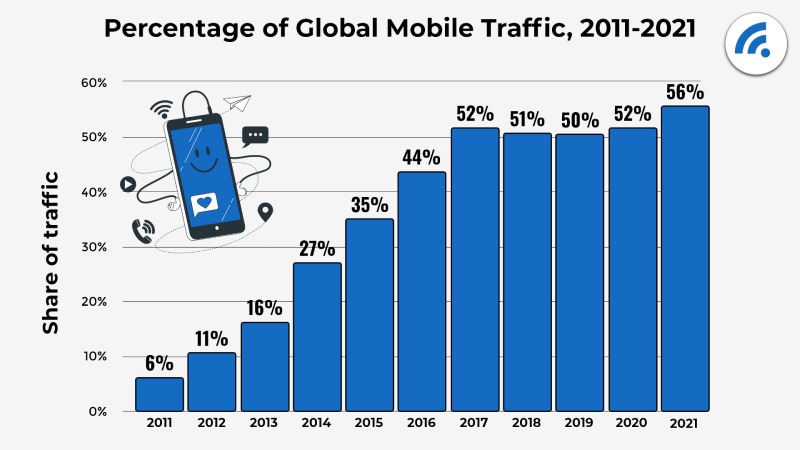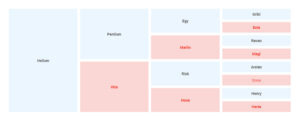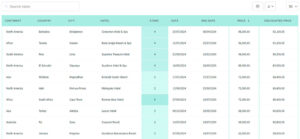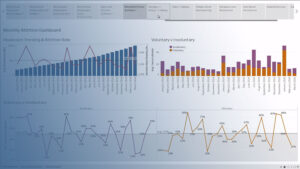Data visualization tools play a crucial role in the development of business operations today. These visual elements enrich communications for staff, clients, suppliers, partners, and possible investors.
Effective data visualizations, or data viz, portray large data sets in a way that eases comprehension. They allow viewers to analyze data at a glance and make logical and correct conclusions.
Today, creating these visualizations is a fully automated process, allowing great flexibility. Still, there are trends you should know about, so you can keep up with how their building methods and applications have evolved.
In this article, you will learn about 13 data visualization trends that have shaped the future of the upcoming year.
Thirteen Data Visualization Trends You Need to Know
Accessibility
Accessibility does not apply only to physical spaces; it must also extend to technological and digital tools.
Among data visualization trends, this is one of the most impactful. It ensures that all people get to understand and use these visual resources.
There are some measures to take when it comes to implementing accessibility. One of the most easily applicable steps is including alternative or descriptive text for visual analytics.
Another way to make your visualizations more accessible is to create proper sound accompaniment. You can also adopt colors that are clearer for those with visual disabilities.
Allowing User Interface (UI) Design to Shape Business Intelligence
Aesthetics are crucial in all business communications, especially in data visualization. So companies have allowed UI design to shape their business intelligence layout.
This approach has many benefits. It enables an in-depth application of brand identity to make data visualization an even more valuable and versatile tool.
An easy-to-use interface allows for clear reading, to highlight critical information and current events. In addition, it guides users throughout navigation, allowing for functional and enriching interactiveness.
Another advantage lies in the effective use of color to accentuate data rankings and direct information to the right user.
Artificial Intelligence (AI)
Despite not being a new data visualization trend, artificial intelligence is still one of the most crucial. It conveys large data sets visually by using machine learning and natural language processing.
The best data visualization software can automatically process complicated data. So companies do not need to maintain staff dedicated solely to filtering and rendering raw data.
Instead, they save time and manual labor by eliminating tasks susceptible to human error. According to the type of visualization chosen, they unlock big data results with little effort.
This makes implementing even the most complex solutions much cheaper because there’s no need for hiring staff and dealing with their further movement in the future. Asking another company even for full-fledged big data development services is much easier and more profitable in most cases.
This approach is valuable for quantitative data analytics. It supplies information to business users, consultants, and existing or potential customers.
Building a Reporting Ecosystem Through Application Integration
One of the biggest trends for the upcoming year is merging data visualization tools. Application integration allows businesses to achieve better results through a complex reporting ecosystem.
In turn, such a system can facilitate responding to routine demands of data processing and analysis. Besides this, it simplifies on-demand operations.
Therefore, companies can share their progress with customers, stockholders, and third parties. They additionally get to track performance indicators, which promotes faster growth.
Creating Mobile-friendly Data Visualizations
Creating graphics that are accessible through mobile devices is not a new idea. However, with the increase in the daily use of these devices, this is now a significant data visualization trend.
Many people spend most of their time on their smartphones. They are constant users, whether to check social media or their email inboxes.
Notice this 2022 research by Broadband Search showing that over 55% of all internet traffic in 2021 came from mobile phones. Thus, companies seek to create data visualizations compatible with their configurations.
Replacing data-driven documents with actionable data for mobile devices increases engagement. It takes effort and specific skills to construct engaging emails, interactive posts, and webpages.
Even so, this attracts new customers, improves their experience, and boosts the chances of client retention.
Your beautiful data deserves to look good on any device
wpDataTables can make it that way. There’s a good reason why it’s the #1 WordPress plugin for creating responsive tables and charts.

And it’s really easy to do something like this:
- You provide the table data
- Configure and customize it
- Publish it in a post or page
And it’s not just pretty, but also practical. You can make large tables with up to millions of rows, or you can use advanced filters and search, or you can go wild and make it editable.
“Yeah, but I just like Excel too much and there’s nothing like that on websites”. Yeah, there is. You can use conditional formatting like in Excel or Google Sheets.
Did I tell you you can create charts too with your data? And that’s only a small part. There are lots of other features for you.
Data Visualization for Social Media
Within the last few years, social media users have increased significantly. Hence, data visualization experts consider their valuable marketing tools for businesses. Instagram has a monthly user base of over 2.3 billion active users, highlighting its substantial influence in the realm of social media.
Social media visualizations reach broad audiences and can profoundly impact viewers. They allow businesses to teach, get customer feedback, or incite action with a single image or video.
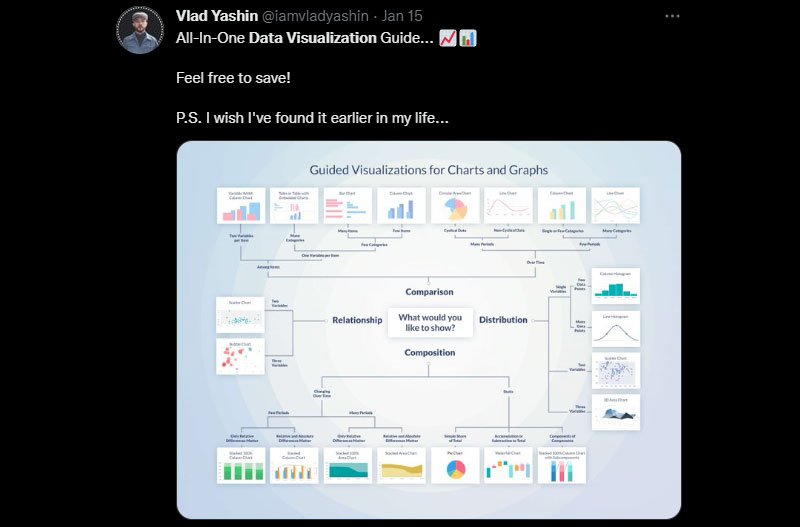
Since social data visualization is a graphical representation, it makes for the perfect post. It will share information like business insights with users without demanding much thought or effort. Also, by incorporating social data visualization into your marketing strategy, you can effectively communicate complex business insights and create a memorable and impactful brand experience.
One way to use social data visualization into your marketing strategy is to create engaging visuals for social media ads and posts. Whether you create Facebook lead ads or Instagram carousel posts, incorporating social data visualization can capture attention and convey information more effectively.
Developing a Data Culture
One of the best ways to develop your company is to build a sound community of followers, those who value and resort to data when making decisions.
But constructing a culture requires more than just using data visualization tools to make it available to people. Instead, you should help them see the importance of including data in their daily routines.
You can build a solid data culture by maintaining it as a constant conversation topic. Whether in a professional or casual setting, you must adapt the information to each discussion and those involved.
Since the goal is to promote regular data usage, it is crucial to invest in data literacy, especially within the workplace. You can also take the initiative to share them with others.
As a final measure to build a data culture, you can seek to inspire by highlighting how versatile and functional data visualizations are.
Following Principles in Artificial Intelligence (AI) and Analytics
Data is, in short, information regarding individuals, groups, or entire populations. So it is necessary to ensure that all people feel represented by such data.
There are five basic principles that AI and analytics should follow:
- Inclusivity. According to the information depicted, data visualizations must implicate an inclusive analysis.
- Protection of human rights. All humans have rights as to their personal information that businesses must keep.
- Respect and safeguarding of user data. Operations collecting user data must keep it safe and protect privacy.
- Accuracy and responsibility. All data should be accurate and should represent real situations. Operations are accountable for how they apply AI and analytics.
- Impartiality. All users should feel represented in what they are reading.
With the increasing awareness of social and moral issues, companies must follow these and other principles. It is crucial to remember that AI and analytics are only as valuable as the principles they consist of.
Illustrations
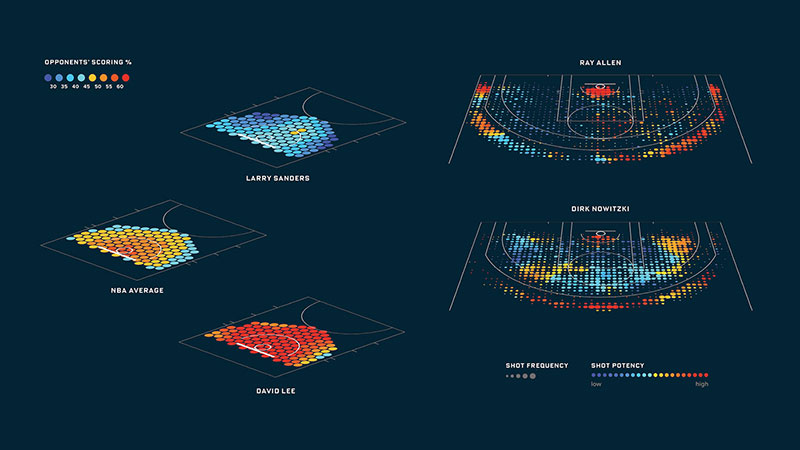
Illustrating data is one of the latest data visualization trends. With the rise of visual media through digital platforms, illustrations have developed into excellent means to convey information.
As a matter of fact, interactive visualizations are more successful in transmitting complex data. On the contrary, static visuals are becoming less appealing to the general public.
Additionally, emerging technologies have generated data visualization techniques that create stories. They are engaging, and they ease comprehension of valuable insight.
It is astounding how flexible and versatile illustrations can be. They can adapt to communications for children or adults of all lines of work and ages.
This visualization solution offers a unique feel of human interaction while being exclusively digital. As an example, consider the Planet Earth children’s book designed by Frederica Fragapane.
Implementing Data Democratization
In the past, creating data visualizations required data scientists to spend much time sorting and depicting data. Thus, they had to develop advanced coding skills.
Now, the best data visualization tools have brought on the latest trend by data democratization. This way, anyone can read, understand, and transmit data without significant effort.
There are numerous programs companies can access to benefit their operation and work teams. If everyone can keep up to date with data-driven insights, they will be more motivated to act accordingly.
This also contributes to workers becoming better prepared to deal with oncoming challenges. Plus, specialized employees can focus on crucial and more rewarding tasks.
Prioritizing User Experience (UX)
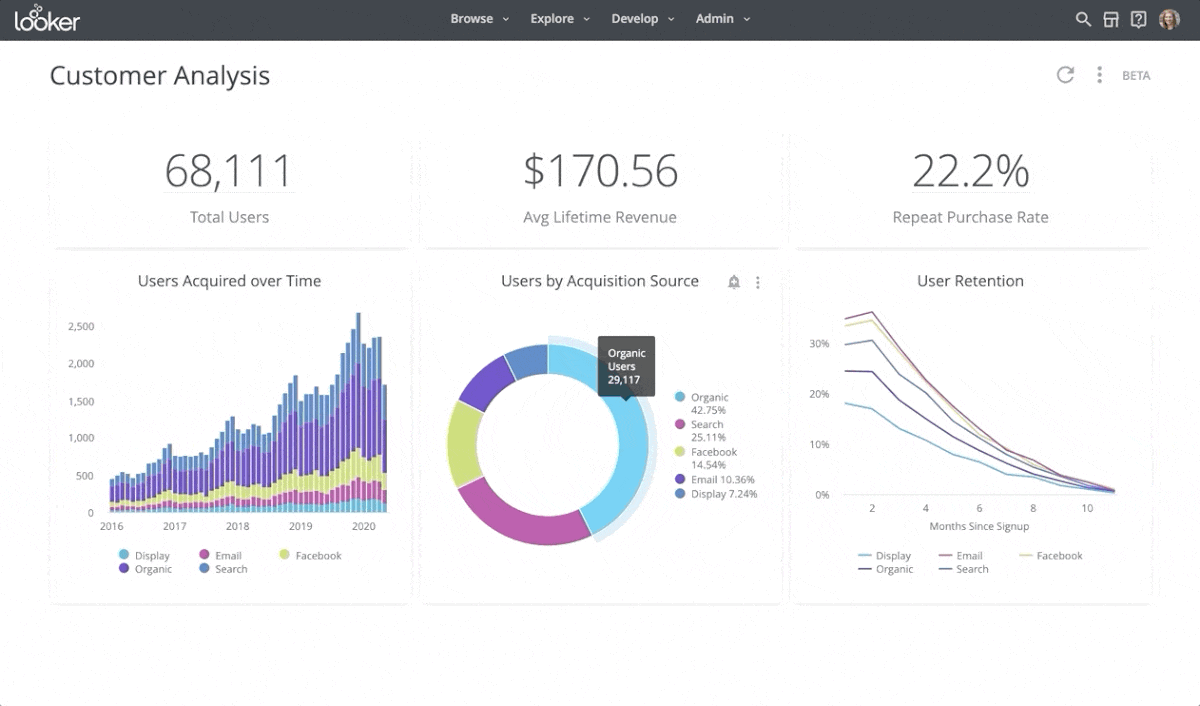
Business communications are changing and becoming more people-centered. Right now, if you present simple bar charts that don’t meet user needs or have a story behind them, chances are engagement will be low.
Hence, to improve data retention, you must focus on user experience. There are many benefits to adopting a user-centered approach.
It allows you to understand company goals, standards, and performance metrics. This way, you will create a data visualization that meets the company’s needs.
Another advantage lies in developing simple but organized layouts, designs, and structures. These assist in efficient reading, comprehension, and the decision-making process.
It will also ensure that your data visualizations are more accessible and impactful.
Real-time Data Visualization
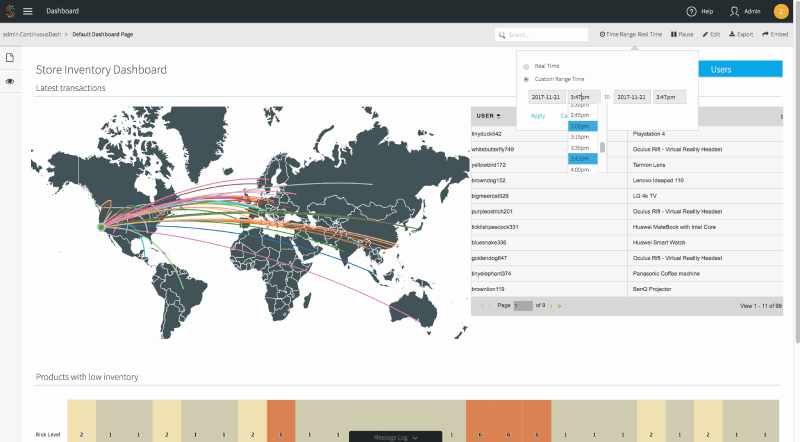
Being up to date with vital information and progress is crucial for those who work in the business world. So, real-time data visualization provides critical insights, which support sound and positive decisions.
Especially when there are unexpected issues, the ability to visualize data instantly is paramount. With no previous preparation, making informed decisions at once is vital.
Another benefit of real-time data is that anyone with internet access can see and understand that complex information. It allows them to interpret and identify patterns in nuanced data sets. Hence, it strengthens departments and teams, helping them work as one.
Video and Storytelling
Despite including crucial, complex data, data visualizations lose value by themselves. They must do more than inform readers by having the power to engage and incite action.
Interactive narratives go much further than simple data analytics graphs like statistical charts. So it is vital to give data a clear and convincing voice.
Hence, story and video infographics are making their way to becoming some of the biggest data visualization trends. And it is becoming critical for data visualizers to understand and employ data journalism techniques.
This data storytelling approach allows companies to follow progress over time. So, presentations are more effective and comprehensive.
Following this trend will ensure you are not just creating pie charts. Instead, you will be telling moving stories that help your business grow.
FAQ on Data Visualization Trends
What’s driving the popularity of interactive dashboards?
It’s all about engagement. Interactive dashboards pull you in, letting you dive deep into the data with a few clicks. They’re a hit because they turn static numbers into a hands-on experience. You’re not just looking; you’re discovering.
How are real-time data visualizations changing business decisions?
Real-time data visualizations are a game-changer. They’re transforming how businesses respond to market changes. With live data, companies can pivot instantly, making decisions based on the latest info, not yesterday’s news.
Why is data storytelling gaining traction?
Data storytelling is on the rise because it connects dots in a way that numbers alone can’t. It’s about crafting a narrative that makes the audience care about the data, providing context that resonates and sticks.
What impact is AI having on data visualization?
AI is revolutionizing data visualization by automating complex analysis. It’s not just about creating graphs; it’s about uncovering insights and patterns we might miss. AI is making data visualization smarter and more insightful.
What’s the significance of mobile data visualization?
Mobile data visualization is crucial because it meets people where they are: on their phones. It’s about delivering insights that are accessible anywhere, tailored for smaller screens without losing impact.
How important is user experience in data visualization?
User experience is paramount in data visualization. It’s the bridge between complex data and the user. A great UX makes data approachable, understandable, and actionable. It’s what makes a visualization a tool, not just a pretty picture.
Are augmented reality data visualizations practical?
Augmented reality in data visualization is beyond a gimmick; it’s an immersive tool. It places data in the real world, offering a new perspective. It’s practical for industries where spatial data and real-time overlays can reveal critical insights.
What role does data art play in visualization?
Data art is making waves by turning dry charts into engaging, memorable visuals. It’s not just about the information; it’s about the presentation, making an impact and leaving a lasting impression.
How is accessibility being addressed in data visualization?
Accessibility is becoming a priority in data visualization. It’s about ensuring that visuals are not just for the many but for all, considering diverse needs and creating inclusive content that speaks to everyone.
Why is cross-platform compatibility crucial for data visualizations?
Cross-platform compatibility is essential because it ensures your visualizations work everywhere. It’s about seamless experiences, whether you’re on a desktop or a smartphone. It’s crucial for reaching a broader audience effectively.
Conclusion on Data Visualization Trends
Businesses will keep using data visualization to communicate internally and with third parties. In truth, this consistent and precise usage offers them many benefits. Companies boost competitiveness and become more flexible to market changes and demands.
In this article, you have learned about the latest and most important data visualization trends for the upcoming years. Keeping up with them will help you improve your operations for phenomenal results.
If you liked this article about data visualization trends, you should check out this article about data visualization blogs.
There are also similar articles discussing scientific data visualization, data visualization challenges, data visualization for marketers, and data storytelling examples.
And let’s not forget about articles on data journalism examples, big data visualization, visualizing large data sets, and financial data visualization tools.



